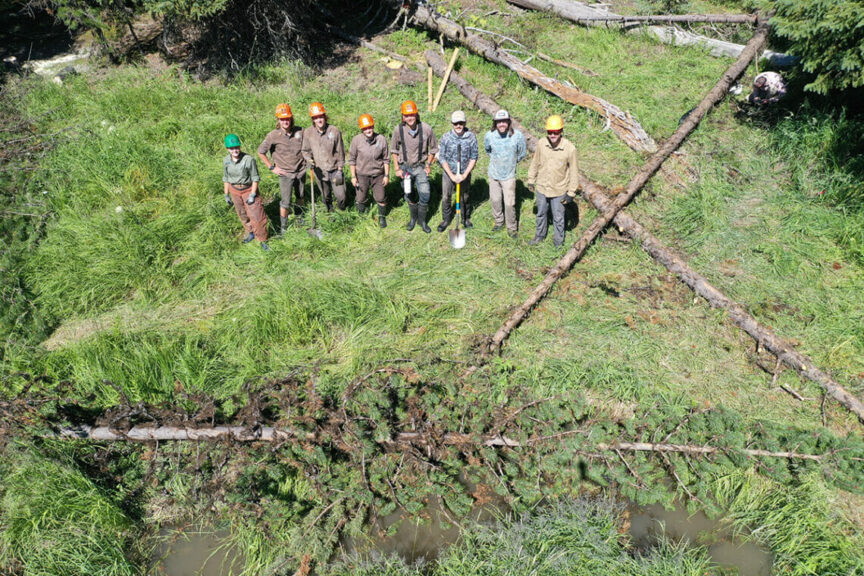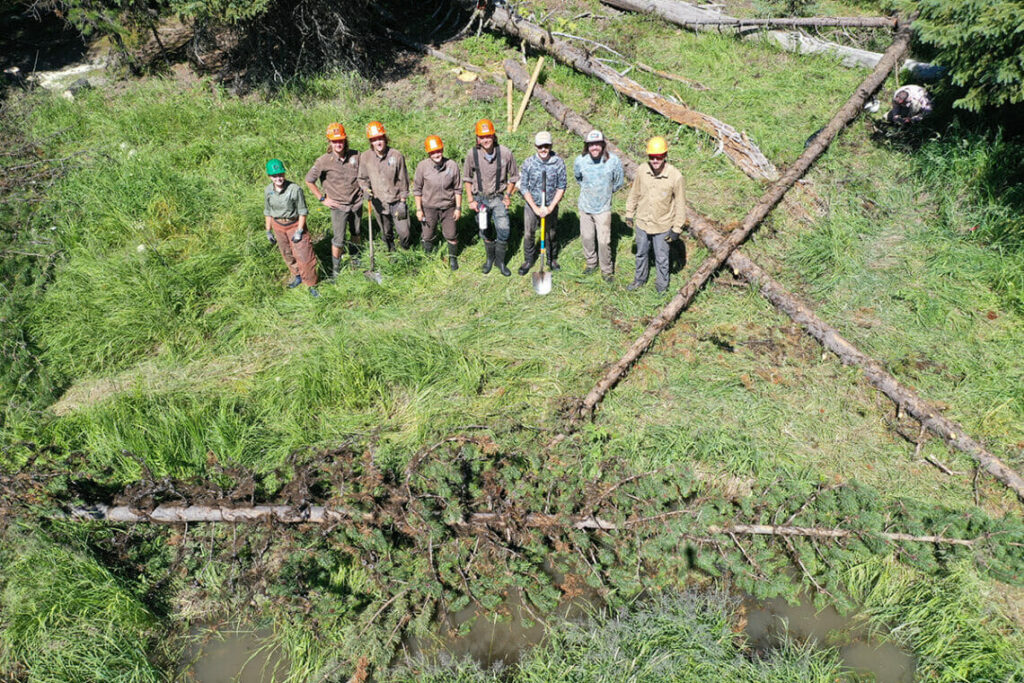
By Kevin Alexander
A dispatch from Northeast Oregon’s Hand Crew Initiative and a summer spent restoring headwater floodplains
Most mornings of our six-week field season high in the headwater meadows of Oregon’s North Fork John Day River began the same way. Carrying chainsaws, griphoists and other tools, our crew of TU staffers and Northwest Youth Corps members hiked through the underbrush along Kelsay Creek and neighboring tributaries looking for the orange flags hanging from streamside trees. The flags marked the locations where we’d stop and get to work.
Historically, these creeks would have been filled with beaver dams and logjams. As a result, their floodplains would have been fully connected and saturated with cold water. Today, TU’s NE Headwaters Hand Crew Initiative is bringing back these crucial habitat features by using hand tools to add wood to the stream channel and weave sticks and mud into structures replicating beaver dams.
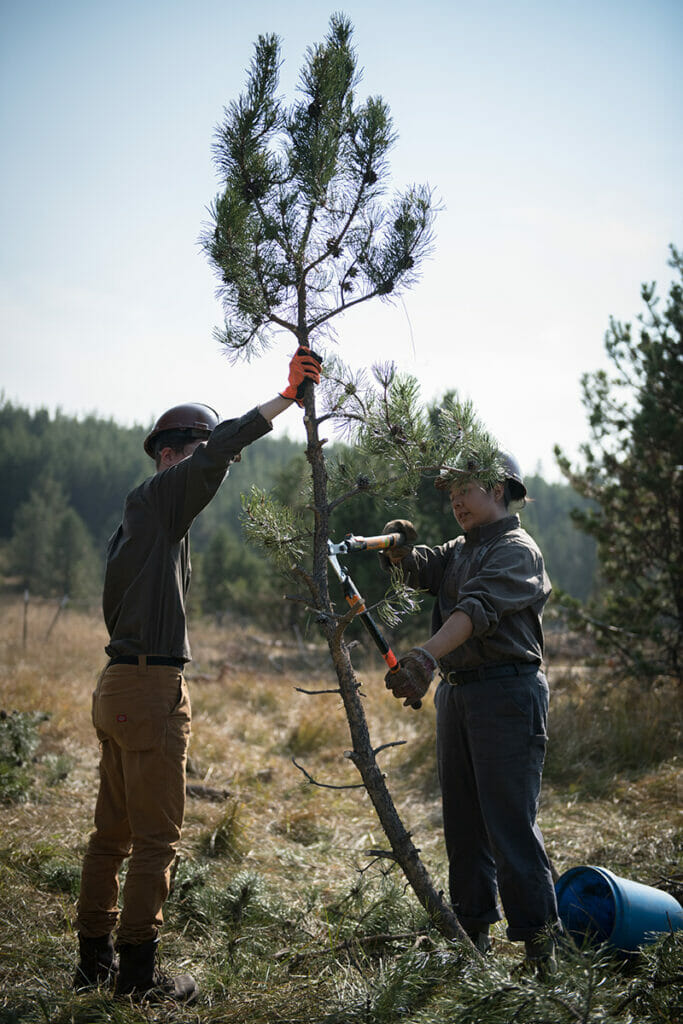
Above: Hand Crew Initiative members prep lodgepole pine limbs for beaver dam analogue construction. Photo by Kholood Eid, National Geographic.
Each summer the Hand Crew Initiative brings together teams of Youth Corps, veterans and other community members to camp, learn about stream restoration and land stewardship, and improve headwater habitats in Northeast Oregon’s salmon and steelhead bearing watersheds. 2022 was the program’s fourth season.
400 Million Beavers Down to 6 Million
Experts estimate that some 400 million beavers used to roam this continent. Today, the number could be as low as six million. These ecosystem engineers manipulated whole valley bottoms into pristine, complex, inundated habitats. Kelsay Creek was once one of those places.
Today Kelsay Creek bears the scars of 100+ years of road building, logging, overgrazing and beaver trapping. These severe impacts dried up a beaver-driven, valley-wide complex of channels, pools and wetlands into a single simplified stream channel. This single-thread channel cut down into the valley soil over the years, disconnecting the creek from its floodplain. This same story has played out in headwater streams across the region, sharply reducing available spawning and rearing habitat for ocean-going and resident fish.
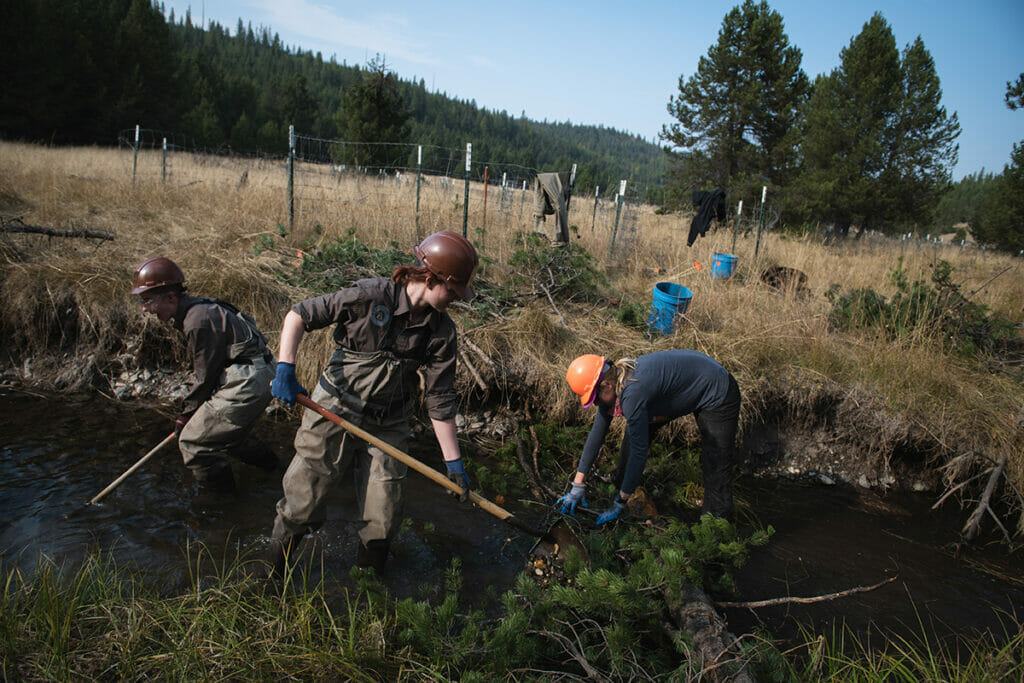
In these streams, our mission is to restore watershed processes and help set the ecosystem back on a path towards a self-sustaining balance. To accomplish this, the Hand Crew teams build structures called “Beaver Dam Analogues” (BDA) to replicate the ecological and hydrological benefits abundant beaver populations once provided to these habitats.
BDAs send water snaking out into the floodplain, raising the water table. Over time, sediment washing down the creek will build up behind the dams and raise the streambed, counteracting years of erosion. Our crew also built wood jams to create pools and riffles, providing the shade and cover fish depend on.
Eventually, the goal is to reestablish beavers in these streams to do this habitat maintenance naturally. To prepare for their return, we planted willows and other shrubs to create future beaver food and construction supplies.
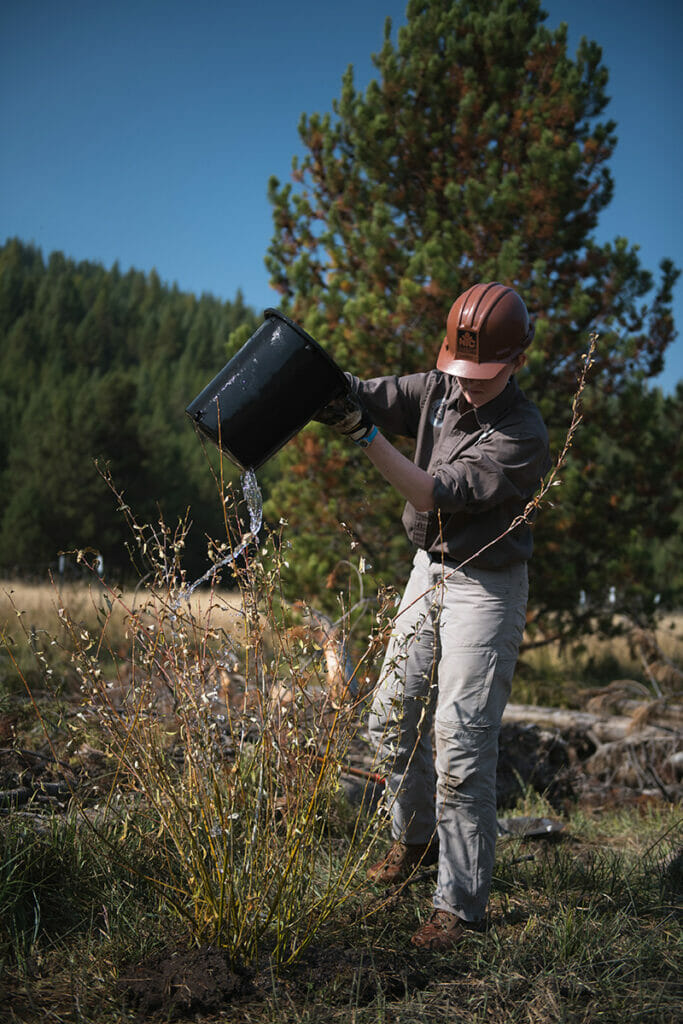
Living and Working in NE Oregon’s Headwater Streams
The Northwest Youth Corp members were new to stream restoration work, but after guidance from TU staff, they quickly picked up the basics. The Corps is made up of six young adults who come from diverse backgrounds throughout the country to learn to steward these important areas. By the end of the first week of work, the gang was cruising through the construction projects, leaving behind numerous structures that help saturate the previously dry floodplain.
By the end of the first week of our season, we were so engrossed in the beaver mindset that some of us opted to nibble on a willow branch growing near the creek. Our finding? Not very tasty!
The Hand Crew spent Monday through Friday camping wherever we were working. We took the weekend off and headed back to town for a shower. Counterintuitive though it may seem, Mondays in the field were often the best day of the week. After we made our way up the dusty Forest Service roads to our worksite, TU staffers and Youth Corps alike always rushed back to the previous week’s sites to see the progress we’d made.
We would find the stream branching, spilling, and flooding over and around our new BDA structures. We saw beautiful, sheltered pools where dried floodplain had been previously. We saw tiny steelhead smolts darting between the shady pine branches we’d placed in the stream. More than anything, we saw a degraded ecosystem on its way to recovery. And I got to see the unbridled excitement of the Youth Corps as they took in the positive impact their work had on the ecosystem in a span of just a few days.
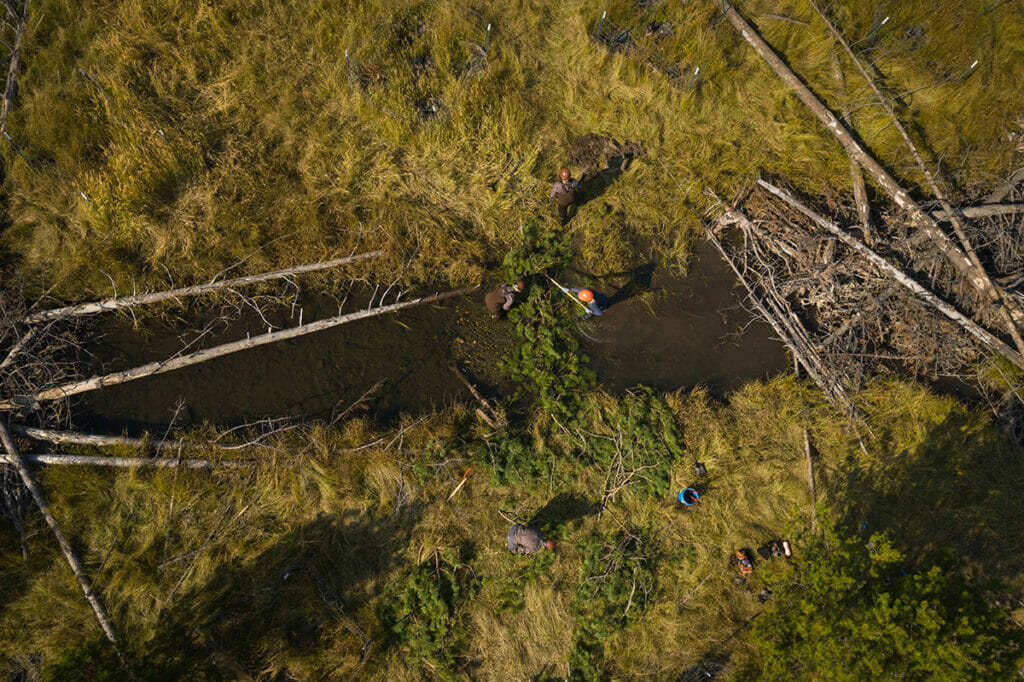
New Watershed Stewards
During the 2022 season we worked on several streams in the headwaters of the North Fork John Day River, including Kelsay Creek, Desolation Creek, Howard Creek, and North Fork Cable Creek. Last summer the Hand Crew Initiative restored over 3 miles of crucial headwaters habit by hand-building over 124 BDA structures and logjams and planting countless willows in the newly saturated floodplains.
Seeing the progress of our work was fantastic, but the best part of the summer was watching our crew becoming stream stewards. By the end of the season, several of the Youth Corps told me that even if they didn’t come back to work next summer, they were going to visit just to see the continued progress of the restoration work we’d built.
That, to me, is what the Hand Crew is all about. I also can’t wait to see the stream ecology recover, but I’m just as excited about the next generation of stewards growing into this important role.
To learn more about TU’s NE Oregon Headwaters Hand Crew Initiative click on these links:
Short Video Highlighting the Hand Crew and their experiences
Loon Outdoors Article on the Hand Crew
Hand Crew Initiative Project Partners: Confederated Tribes of the Umatilla Indian Reservation, Umatilla National Forest, Wallowa-Whitman National Forest, Oregon Watershed Enhancement Board, Bella Vista Foundation, and National Fish and Wildlife Foundation.


